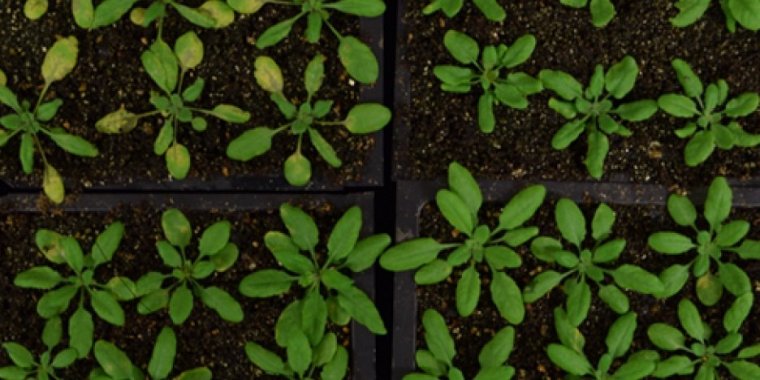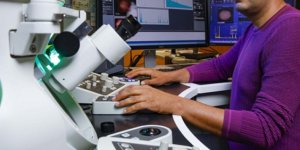| News / Science News |
Plants reprogram their cells to fight invaders
In times of war, factories retool to support the needs of battle. Assembly lines change course from turning out car parts to machine guns, or from building washing machines to aircraft engines.

Plants engineered to resist disease can fend off infection but suffer stunted growth (top left). Photo: Guoyong Xu/Duke University
To hear Duke University scientist Xinnian Dong tell it, plants can shift from peacetime to wartime production too.
Crops and other plants are often under attack from bacteria, viruses, and other pathogens. When a plant senses a microbial invasion, it makes radical changes in the chemical soup of proteins — the workhorse molecules of life — inside its cells.
Dong and her team have been piecing together just how they do it. In a study, Dong and first author Jinlong Wang reveal the key components in plant cells that reprogram their protein-making machinery to fight disease.
Each year, around 15% of crop yield is lost to bacterial and fungal diseases, costing the global economy some $220 billion. Plants rely on their immune system to help them fight back, Dong said.
Unlike animals, plants don't have specialized immune cells that can travel through the bloodstream to the site of infection; every cell in the plant must be able to stand and fight to defend itself, quickly shifting into battle mode.
When plants come under attack, they shift their priorities from growth to defense, so cells start synthesizing new proteins and suppress production of others. Then, "within two to three hours things return to normal," Dong said.
For plants, fighting infection is a balancing act, Dong said. Allocating more resources to defense means less is available for photosynthesis and other activities in the business of life.
Producing too many defense proteins can create collateral damage: Plants with an over-active immune system suffer stunted growth.
By understanding how plants strike this balance, Dong said, scientists hope to find new ways to engineer disease-resistant crops without compromising yield.
“Although so far unique to plants, the mechanism uncovered may also be operating in yeast, insects and humans,” said Michael Mishkind, a program director in NSF’s Division of Integrative Organismal Systems. (U.S. National Science Foundation)
YOU MAY ALSO LIKE





